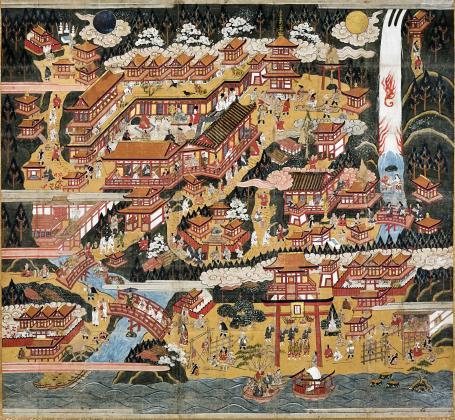
Nachi Sankei Mandara; 16th-17th century; hanging scroll, ink and color on paper, 59 7/8 x 64 3/4 in.; Gitter-Yelen Collection, New Orleans.
Webinar
This talk will explore the origins of a genre of religious painting that appeared in 16th century Japan, referred to by modern scholars as sankei mandara (pilgrimage mandalas). The culmination of a long movement towards wide viewership, these large-scale boldly colored paintings served as advertisements for temples and shrines. They were used by itinerant monastics in narrative recitation performances to raise funds for the renewal of sacred sites after a century of civil wars depleted the traditional aristocratic sources of patronage. Though novel in appearance, the salient features of sankei mandara may be discovered in a rich array of paintings from previous centuries, such as “dependent origin” scrolls (shaji engi-e), shrine mandalas (miya mandara), and screen paintings of Kyoto (rakuchū rakugai zu). We will consider each of these forms of painting and their contribution to sankei mandara expression and reception.
